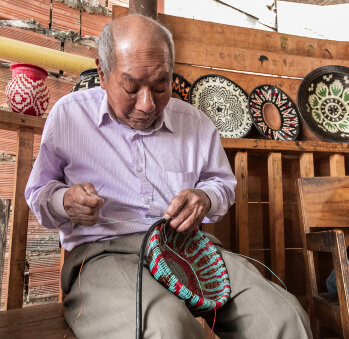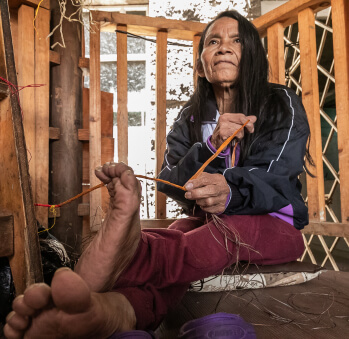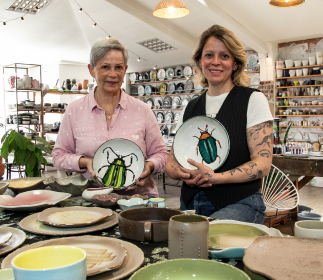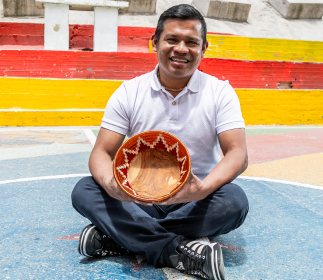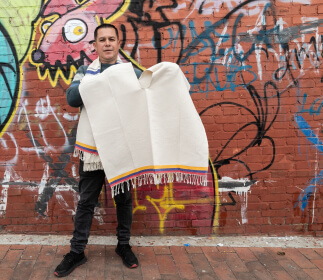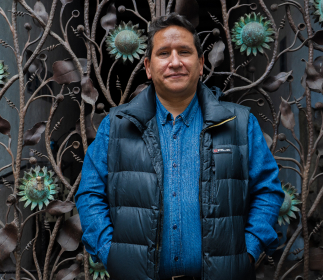Sercelinito Piraza
Workshop: Waujen
Craft: Weaving
Trail: Bogotá Route
Location: Bogotá, Bogotá
His father’s name was Sercelino, so he was baptized as Sercelinito. And as if he had embraced his diminutive, he’s warm and speaks with a rhythmic, and sweet tone. Now in his seventies, he looks back with pride at what he has accomplished and remains hopeful about the future. He lives in Bogotá, in the mountains of the Vista Hermosa neighborhood in Ciudad Bolívar, and is among the first Wounaan indigenous people to arrive in the capital. He recalls the exact date—April 28, 2003— the day he arrived just like so many who seek a new home fleeing violence from their ancestral lands, in his case, the community of San Antonio de Togoromá, a settlement on the San Juan River in Chocó, which he helped establish.
However, Sercelinito had visited Bogotá long before that. He clearly remembers it was 1976, and he was just in his thirties. He had come to the capital because Capuchin missionary nuns had suggested that what he and his community were making with chocolatillo could become a commercial product to help improve their incomes. Driven by a mission to preserve his people’s traditions, he ended up meeting with designers from Artesanías de Colombia. Together, they set out to develop products that combined decorative elements with the beauty of the werregue fiber, derived from a palm similar to chontaduro that thrives in their ethnic territory. Traditionally used for practical items like baskets, pots, plates, and bowls, the Wounaan people’s mastery of basketry is such that their vessels can hold liquids without spilling, thanks to the way they tightly weave the fibers.
Sercelinito returned to his community full of enthusiasm, seeing the potential value of the beautiful creations the women in his community made. His excitement spread throughout the community, and Wounaan basketry began to gain recognition as one of the most emblematic crafts of Colombia’s Pacific region. Ironically, his role as an ambassador for his people’s craftsmanship led to his expulsion from his territory. Envy over his success and the money he brought back—money earned from selling the community’s crafts for their benefit—eventually forced him to leave. And then, his wife Carmen Julia, and their ten children left too.
Craft

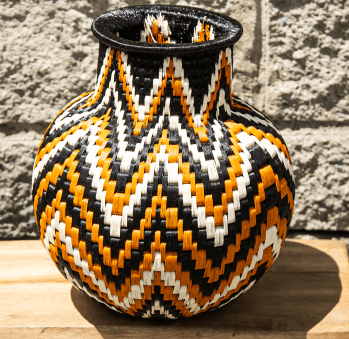
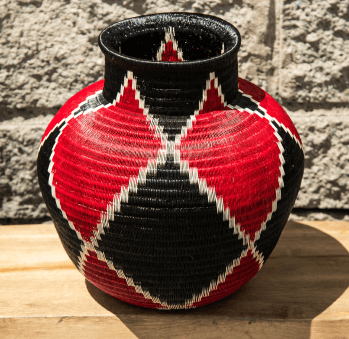

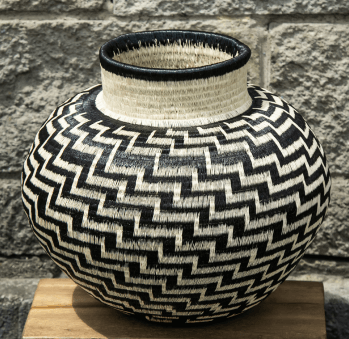













Artisans along the way
Artisans along the way
No puede copiar contenido de esta página











































